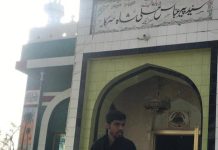
Karachi: All provinces of Pakistan have increased funds for education in their annual budgets, but most of the allocation has been made toward salaries, not for development.
According to an analysis of government financing by Institute of Social Policy Sciences, the highest allocation for education has been made by Khyber-Pakhtunkhwa with 26 %, Punjab with 24%, Sindh with 22% and Balochistan with 19% of their annual budgets.
The lead researcher at I-SAPS, Ahmad Ali while talking to News Lens Pakistan said, in all four provinces, more than 75 percent of the budget is reserved for salaries and allowances ignoring the developmental budget.
“The salary budget is for recurring expenses and increasing these funds means that a large portion of the allocated funds remain unspent when it could have been utilized for operational expenditure of schools and colleges,” he said.
The highest allocation in this regard was made by Sindh this year with reserving 90 % of its budget for salaries, followed by Punjab with 85 %, Khyber-Pakhtunkhwa 76 % and Balochistan with 71 % respectively.
The funds allocated under current expenditure are left at the end of the financial year instead of using for operational development of schools due to which hefty increase failed to show any considerable improvements in the children’s learning outcomes or overall development in the education sector, he added.
In last financial year (2013-2014) Sindh did not utilize 23 % of the allocated funds, followed by Khyber-Pakhtunkhwa with 16 %, Punjab with 9% and Balochistan with 3% of the funds.
For this financial year (2014-2015), according to the analysis, Sindh has allocated 25 % of its salary budget and 22 % of its total education budget for development. However, allocations in other provinces for development of education remain well below 10 %.
“So far, expenditure on development schemes is low across the board. Around 67 % of Sindh development budget remained unutilized in the last fiscal year while half of Khyber-Pakhtunkhwa and Balochistan were also not utilized,” he said.
Ali believes that public financing needs to be linked with the learning outcomes of students to be able to gauge its effectiveness. “The data needs to be linked to outcomes and the policies. All of these factors can’t work in a vacuum; they have been in conjunction with each other.” he added.
Literacy Rate
Pakistan’s literacy rate stood at 58 percent which was well short of the 215 target of 88 percent.
According to the United Nations Development Program, more than a quarter of students enrolled in government’s primary schools across the country do not reach tenth grade.
“The provincial allocation for education is indeed significant, but overall Pakistan still spends only about 2% of its GDP on education, the lowest in the region, gender disparities and the rural-urban divide is playing a major role in hampering sustainable development of education,” Salman Humayun, the principal researcher told News Lens Pakistan.
However, in his opinion, the weakest link was not only the lack of funds spent by the country on education, but also their inefficient allocation, management and monitoring.
“Since the law makers and relevant stakeholders are removed from the budget planning process, allocations are misguided, the untimely release of funds, high administrative expenditures, corruption and mismanagement all add to the existing problems,” he added.
Public to Private Shift
The rural-urban divide referred by Humayun can be gauged from the latest findings of the Annual Status of Education Report (ASER) 2014.
Around 4 percent of children across the country shifted from public to private schools in the past 12 months and the largest percentage of them were from Sindh. Private schools in Sindh’s both rural and urban areas increased by around seven percent from last year, out of total 10 percent non-state providers, out of which one percent were seminaries.
ASER data also reveals that out of the total government educational facilities in Sindh, 91 percent are primary schools, five percent middle schools and only three percent are high schools.
Balochistan too witnessed a sharp increase in non-state providers, from 10 to 20 percent, with four percent schools and six seminaries.
Head of ASER Pakistan Baela Raza Jamil told News Lens Pakistan that one of the main reasons for this shift was the gap in public education after primary schools.
In rest of the country, the ratios are: primary school to middle school is 9:1 and primary school to high school 14:1 in Balochistan, 9:1 and 12:1, respectively, in Khyber-Pakhtunkhwa and 4:1 and 6:1 in Punjab.
Policy making and implementation
An eminent educationalist and the president of Shaheed Zulfikar Ali Bhutto Institute of Science and Technology Shahnaz Wazir Ali believes that the reason for persisting bad management of the education sector is due to the disconnection of provincial/federal government policy makers from ground realities.
Once important decisions are made by those affected by the policies, planning will become more manageable and policies and their implementation will also be streamlined.
This can be achieved by devolving education plans to districts and empowering education officers to reduce the workload for the provincial governments and bridge the gap between higher officials and implementation.



